Smith Optics Trace MIPS review - packed with safety features yet still breathable
We check out the the brand's best selling road bike helmet to see what all the fuss is about
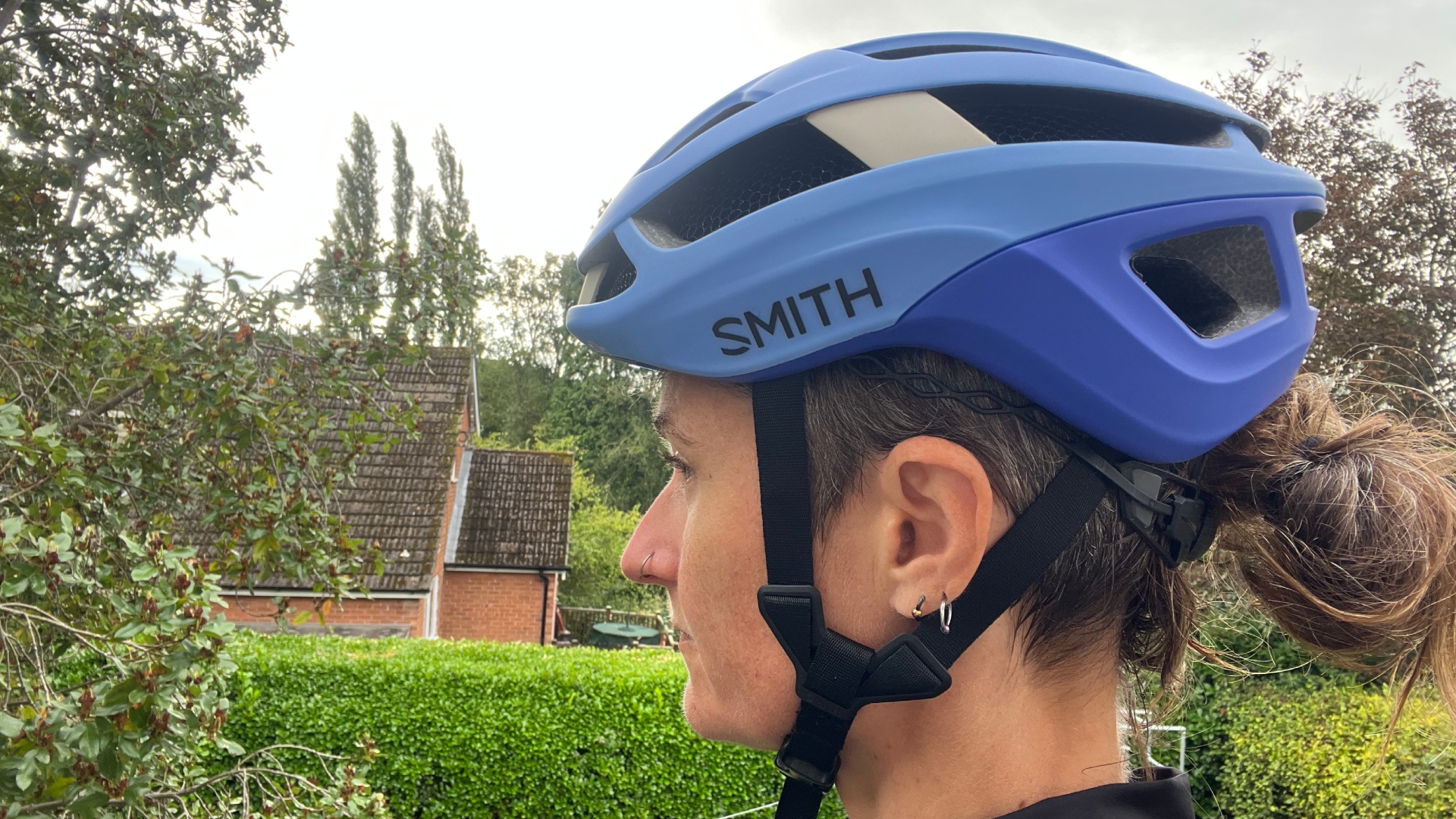
With no obvious USP, the Smith Optics Trace MIPS helmet takes a little time to understand why it's one of the best selling helmets. But drill down and you'll come across the safety features of MIPS and KOROYD that still gives the helmet decent breathability and doesn't pile on the pounds weight-wise. Its shape shifting versatility - due to the inability of being nailed to just one cycling discipline - makes the Optics Trace a decent bang for buck option, although it's not exactly at the budget end of the market.
-
+
Safety features of MIPS and KOROYD
-
+
Barely there ride feel
-
+
Breathable even in 30°C/ 86°Fdegree heat uphill
-
+
All round rider appeal
-
+
Up to ten colorways to choose from
-
+
Priced well in market (but not cheap)
-
-
Heavier than similarly priced helmets (although does have extra safety features)
-
-
Requires Smith own brand glasses to integrate
-
-
Lack of performance data
-
-
Bulbus for small heads
You can trust Cycling Weekly.
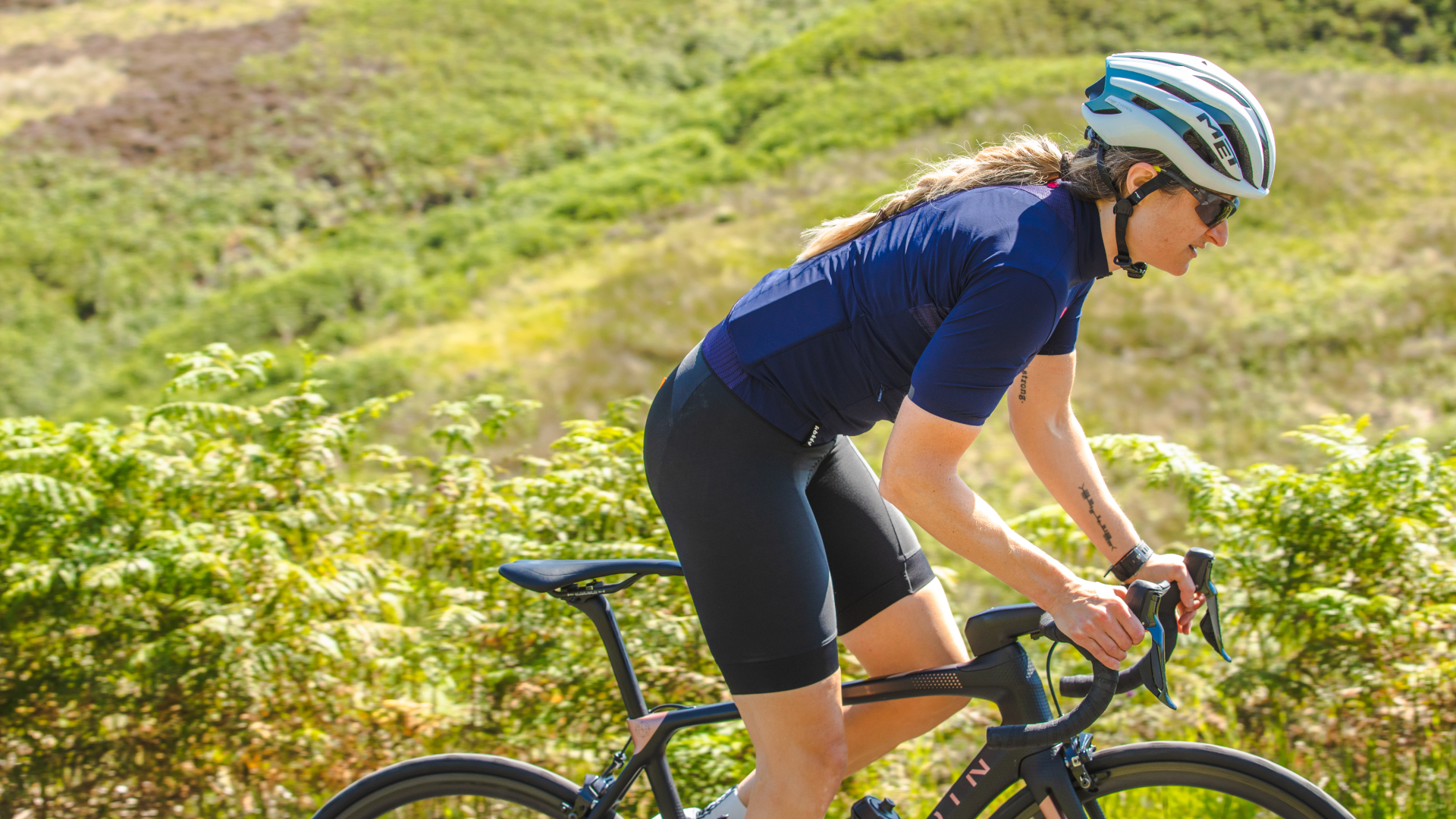
Trying to be stand out in a crowded space is a tough gig. Your USP (unique selling point) needs to be instantly capturing otherwise you risk losing your audience pretty rapidly.
But as neither impressively aero, ultra lightweight or capable of performing a neat party trick, the Smith Optics Trace MIPS helmet has managed to do just that, gaining the brand's 'best seller' title and is seen by many riders as one of the best bike helmets on the market right now.
So how has a distinctly average package of a bike helmet managed it?
Smith Optics Trace MIPS helmet: Construction
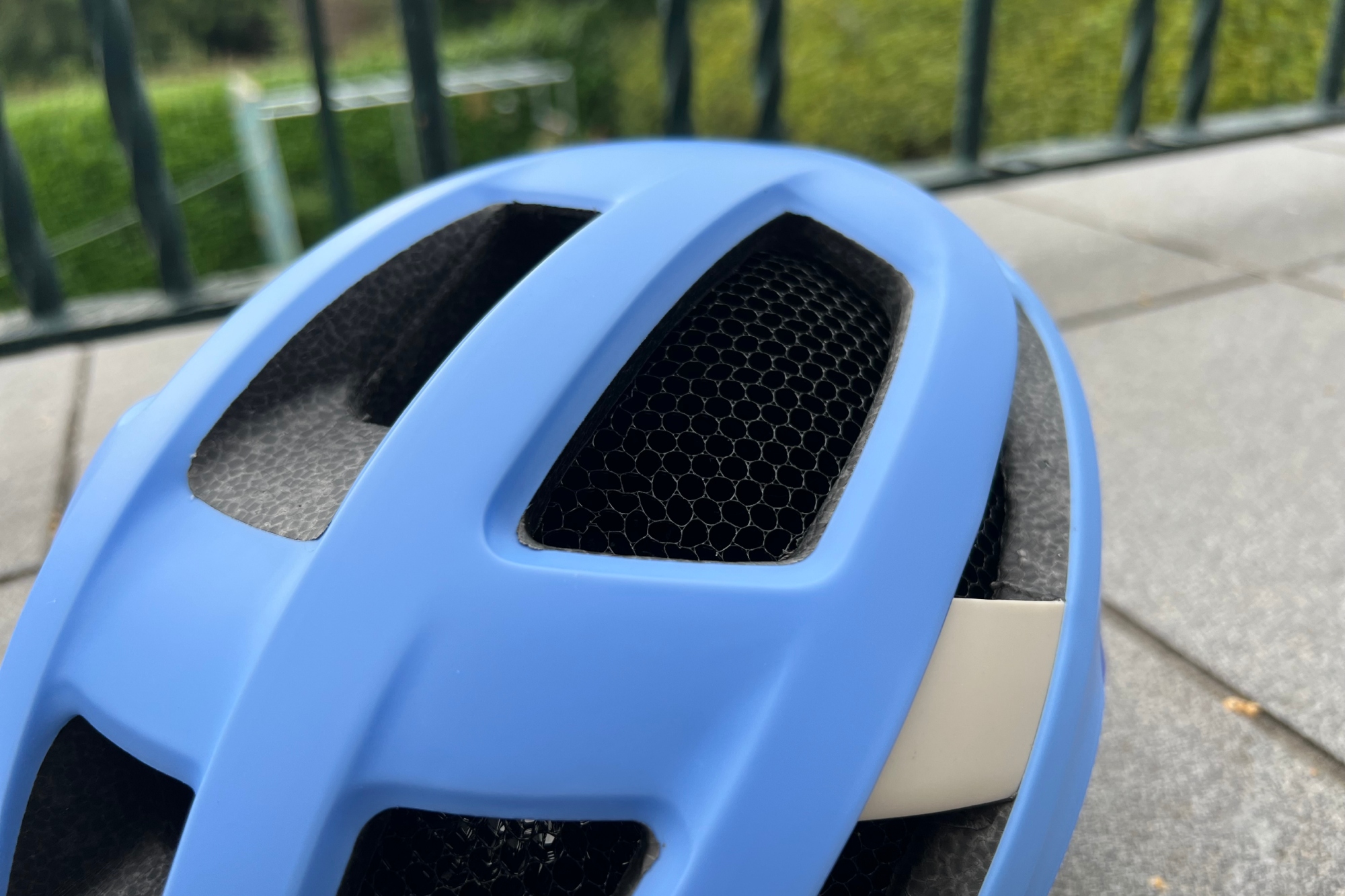
A close up of the KOROYD honeycomb feature
As a generalist helmet, the Smith Optics Trace MIPS helmet has been designed to plug a large hole, from road to gravel, climbing to lead outs and has borrowed several features from other specific helmets in order to meet these varied demands.
To start with, the bold helmet comes with 18 vents. This is just two less than the lightweight Rapha + POC Ventral Lite helmet, which was designed specifically for keeping riders cool on hilly rides.
However, in a one-upmanship - actually, make that two-upmanship - the Smith Optics Trace MIPS helmet includes two rotational impact safety design features. No prizes for guessing that MIPS comes as standard, however 10 points to whomever guessed that KOROYD was also on board.
Its green honeycomb structure has featured on Smith helmets for a while now, such as the Smith Ignite helmet, and claims to significantly dissipate more kinetic energy than a standard EPS foam helmet in the event of impact. It's not wildly dissimilar to Bontrager's WaveCel (without the overconfident claims), and is, according to the KOROYD brand, lightweight and breathable.
KOROYD explains that it works by creating an energy absorbing crumple zone, which not only allows for up to 78% of the material thickness to be compressed under direct and angled impact, which aims to minimize energy transfer to your head. The brand also claims that KOROYD also has much less rebound elasticity when compared to a regular EPS helmet.
While KOROYD may have lightweight properties, the addition of two safety features (MIPS and KOROYD) does plump up the weight to 294g (for a size small). This is over a 100g more than the aforementioned Rapha + POC Ventral Lite helmet.
While safety features may trump lightweight for many riders, shoehorning safety features in with aerodynamics is a much easier task when weight loss isn't a top priority.
Based on profile alone, the Smith Optics Trace MIPS helmet mirrors many aero helmets in that it's quite round and bulbus, rather than the sleek and angular form that many lightweight lids take. However, seeing as there is a total lack of aerodynamic data to back up the marketed 'race day lead-out' capabilities, there's no vouching for its aerodynamics, something to consider if that was a non-negotiable on your helmet wish list.
It seems like the Smith Optics Trace MIPS helmet therefore is looking for the top spot as the best all-rounder helmet with ventilation and top safety features; and therefore looks the Specialized S-Works Prevail 3 square in the eyes.
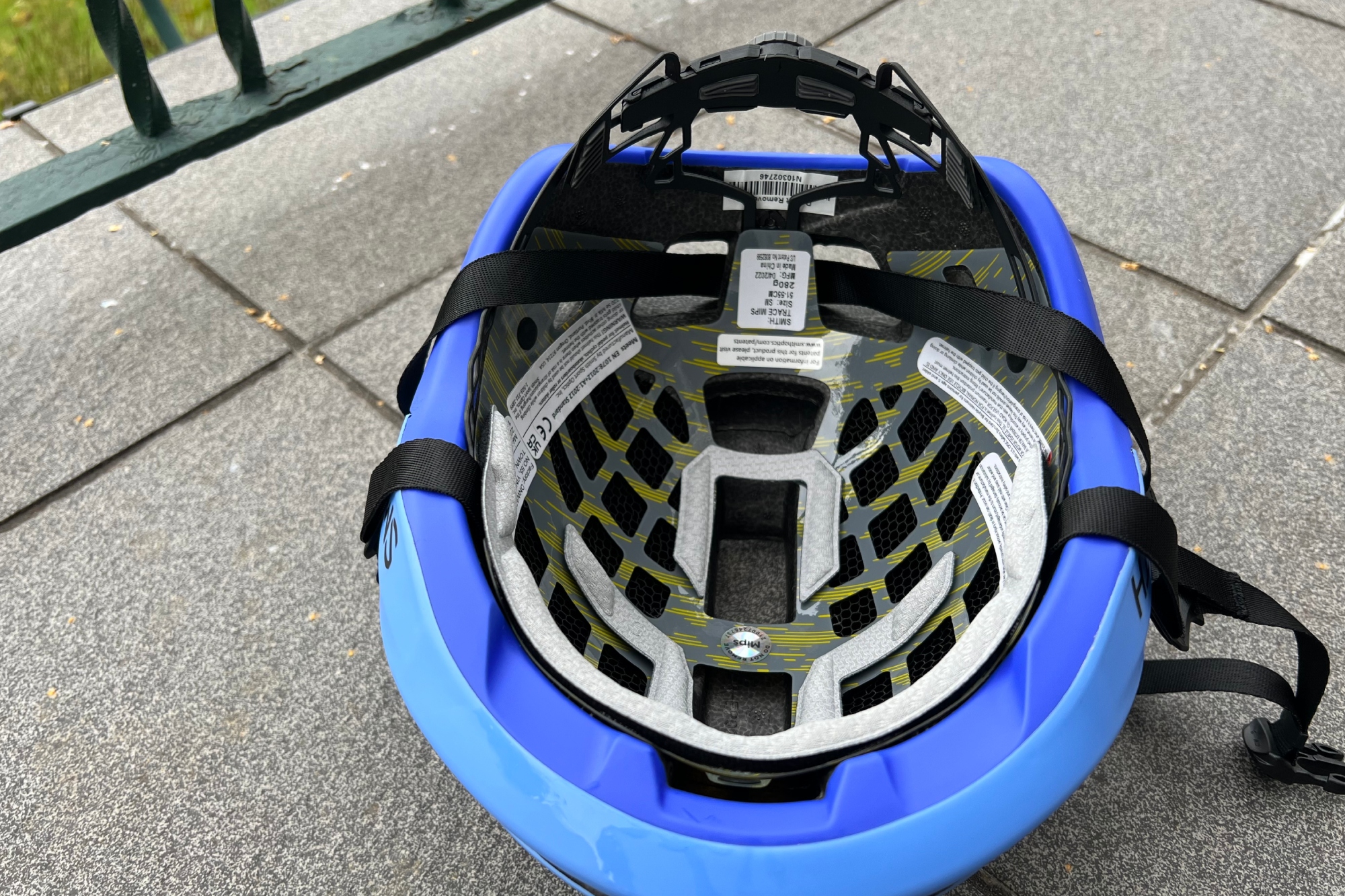
Inside the Smith Optics Trace MIPS helmet shows the full MIPS system
In terms of other features, the Smith Optics Trace MIPS helmet comes with a VaporFit dial adjustment system, very similar to BOA. This extends a significant proportion of the helmet's circumference meaning that, once tightened, it should feel snug all round and not just reduce the space at the rear (which from experience can often equate to the feeling of just having my forehead squashed into the front of a helmet).
Inside is an antimicrobial lining for sweat-activated odor control and outside integrated features allow for riders to ride with Smith eyewear seamlessly.
Other good-to-knows are that there's up to ten colorway options and three sizes to choose from.
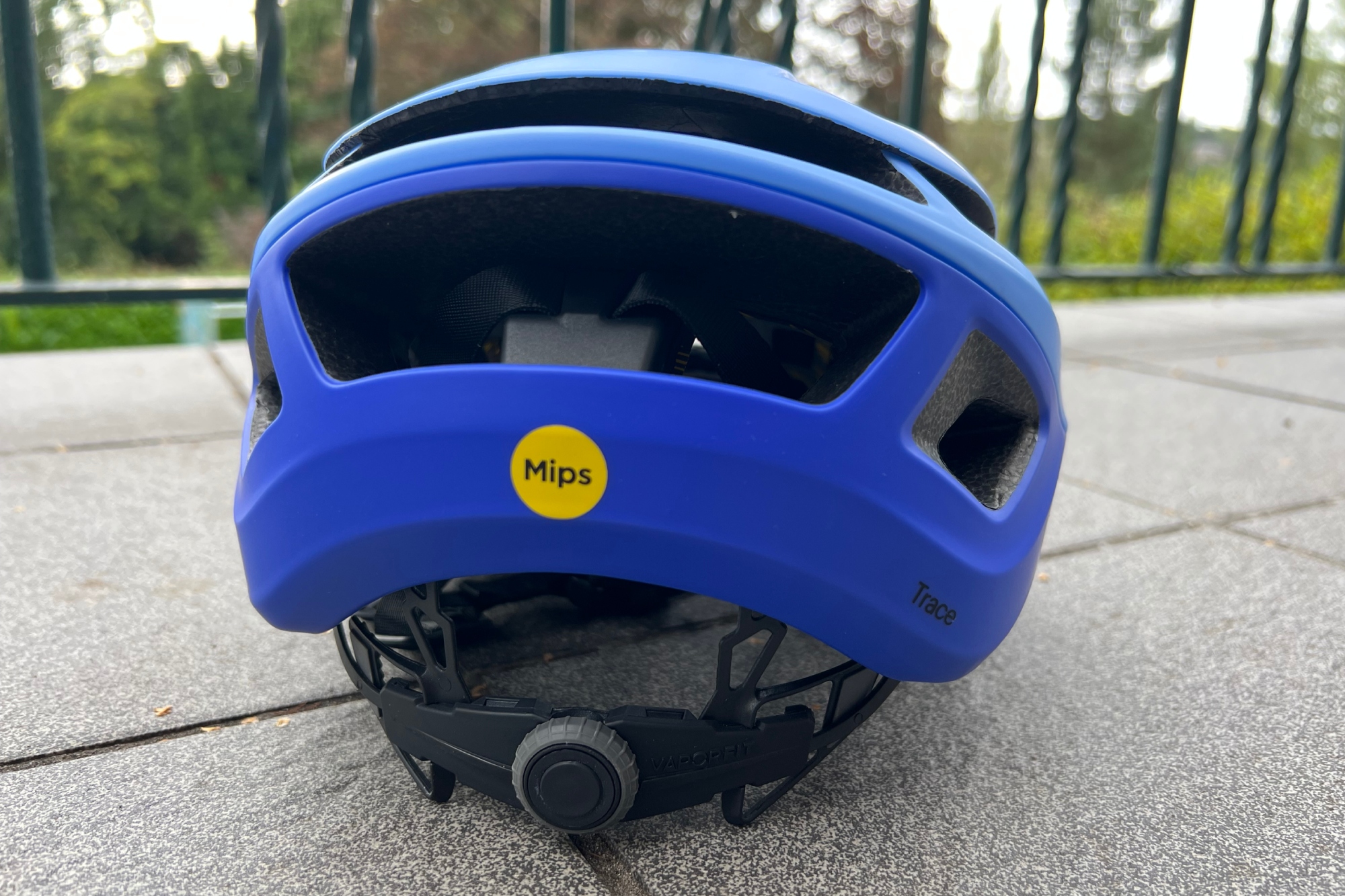
The VaporFit dial adjustment system is very similar to Boa
Smith Optic Trace MIPS helmet: The ride
The Smith Optics Trace MIPS helmet is very comfortable as soon as it's on. While it might be heavier than lightweight options, it's not a noticeable weight when riding. The adjustment system gave a secure, but not overly compressing fit, allowing me to forget the helmet as soon as I was riding.
Thanks to a crazy early September heatwave I was able to get some really hot rides in and, even when tacking some challenging hills in 30°C/ 86°F degree heat, I never felt that I was over-heating once. So top marks there.
With much of the ventilation channels covered by the KOROYD honeycomb, the chances for bug interaction are reduced to just two central ports, for which I, personally, am thankful for.
So, the Smith Optics Trace MIPS helmet is a great fit, has awesome safety features, feels barely there when riding and is super breathable. But I'm still struggling to make it my go to lid.
Despite being an early adopter of helmets for someone of my generation (no, we didn't wear them as kids and yes, I do remember when they became compulsory at the Tour de France), I've always been pretty helmet-conscious.
My problem is that I have an almost perfectly round small head, and most helmets look huge on me.
There was a helmet design sweet spot about 10 years ago, when technology allowed EPS foam helmets to become more slimlined, but since the advent of better safety testing and 'fashion' for aero, most helmets look like I'm about to astride a four legged - not a two wheeled - steed.
Annoyingly for me, the Smith Optics Trace MIPS helmet is firmly in former camp, I was hoping I had got away with it, as it is way more compact than something like the Bell Z20 Aero MIPS helmet, but when my nine year old asked if I was going horse riding I knew it was not as dainty as I had hoped.
Smith Optics Trace MIPS helmet: value and conclusion
As the proverbial Jack-of-all, at face value it can be hard to see how the Smith Optics Trace MIPS helmet stands out amidst its peers.
But drilling down and it's clear that its strengths lie beneath the surface and it's hard to see how the the helmet can be beaten on safety features.
There's also an element of 'less is more'. The lack of performance data or obvious match in helmet categorization means more opportunities for wearing the Optics Trace MIPS across cycling disciplines.
The $250.00 / £200.00 price point seems to sit just right against other helmets featuring MIPS, and this has the added bonus of KOROYD, which based on the manufacturer's claims will provide even more head protection than MIPS alone does, giving it a two for the price of one feeling. Either way it seems fairly priced and a viable option for anyone searching for an all-rounder at this price point.
Smith Optics Trace MIPS helmet: Specs
- Safety Features: MIPS, KOROYD & EPS foam
- Sizes: Small, Medium, Large
- Colors: Ten
- Weight: 294g (for a size small)

Thank you for reading 20 articles this month* Join now for unlimited access
Enjoy your first month for just £1 / $1 / €1
*Read 5 free articles per month without a subscription

Join now for unlimited access
Try first month for just £1 / $1 / €1
Get The Leadout Newsletter
The latest race content, interviews, features, reviews and expert buying guides, direct to your inbox!
Hannah is Cycling Weekly’s longest-serving tech writer, having started with the magazine back in 2011. She has covered all things technical for both print and digital over multiple seasons representing CW at spring Classics, and Grand Tours and all races in between.
Hannah was a successful road and track racer herself, competing in UCI races all over Europe as well as in China, Pakistan and New Zealand.
For fun, she's ridden LEJOG unaided, a lap of Majorca in a day, won a 24-hour mountain bike race and tackled famous mountain passes in the French Alps, Pyrenees, Dolomites and Himalayas.
She lives just outside the Peak District National Park near Manchester UK with her partner, daughter and a small but beautifully formed bike collection.
-
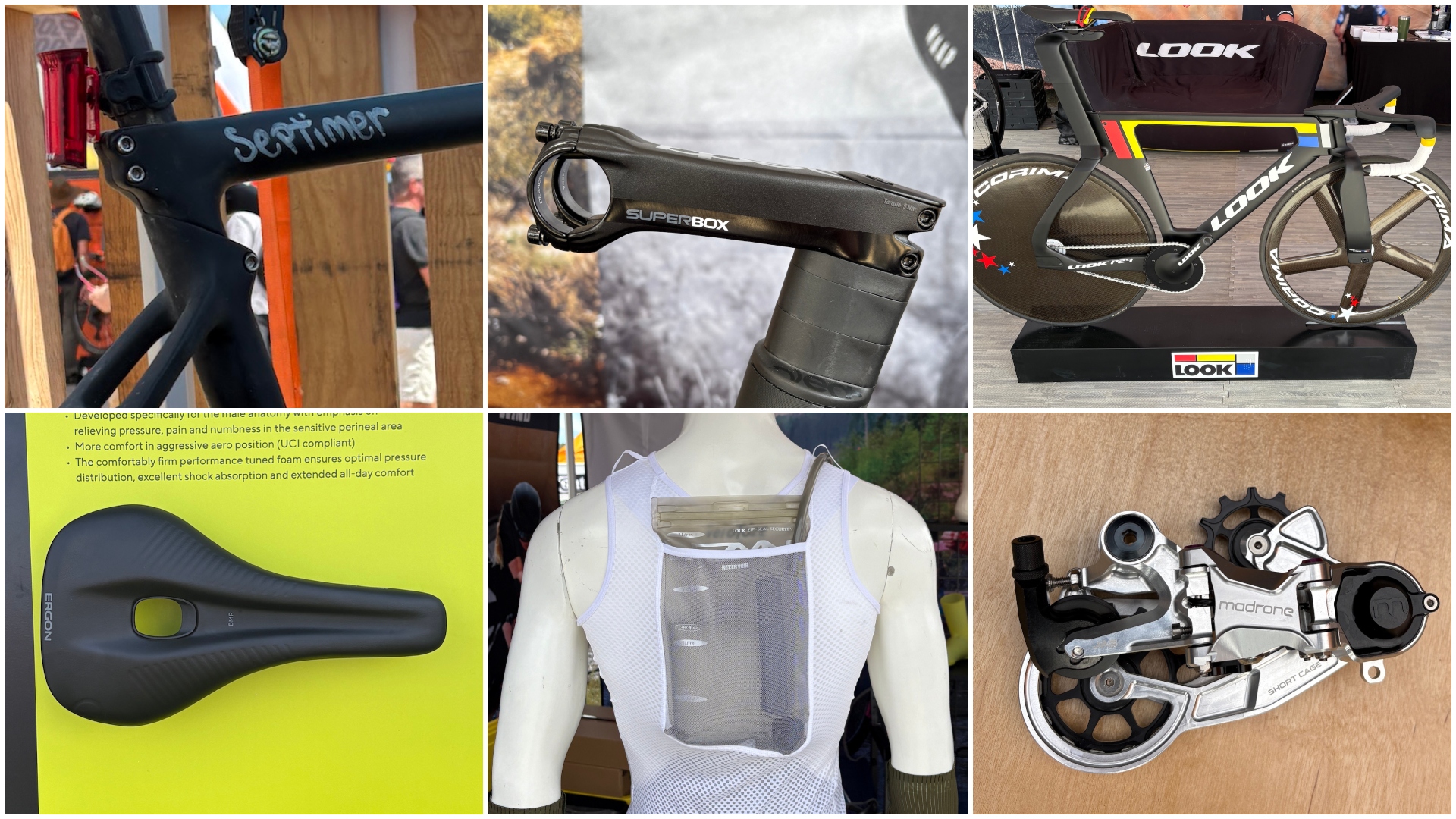 The Sea Otter Classic: sights and sounds from the biggest bike gathering in North America - Part 1
The Sea Otter Classic: sights and sounds from the biggest bike gathering in North America - Part 1Odds and ends that run the gamut, from a $13,000 frameset to armoured kit and new hydro-vests
By Tyler Boucher Published
-
 The thing that bothers me most when I look back at old school training is that right now we’re doing something equivalently misguided
The thing that bothers me most when I look back at old school training is that right now we’re doing something equivalently misguidedOur columnist's old training diaries reveal old-school levels of lunacy
By Michael Hutchinson Published
-
 'This race is absolutely disgusting': Peloton reacts to another brutal Paris-Roubaix Femmes
'This race is absolutely disgusting': Peloton reacts to another brutal Paris-Roubaix FemmesNow in its fifth edition, Paris-Roubaix Femmes is still a tough race, even for the best bike riders in the world
By Adam Becket Published